Spring is coming (one of these days) which means it’s time to spruce up your apartment. Something that really helps a rented space feel like a home is other life, whether that’s family, a partner, a roommate, a pet… or lots of plants.
My favorite plant store in the city is The Sill, which has two locations in Manhattan, a new store in Los Angeles, a convenient online shop (they deliver plants right to your door!) and a must-follow Instagram account. I’ve bought tons of plants from The Sill and they’re all thriving. The Sill sells only healthy plants and each one comes with a care card that outlines its specific needs, making it easy to care for even if you’re a first-time plant parent.
I spoke to Erin Marino, Director of Brand Marketing at The Sill, about all things indoor plants. Keep reading to learn a thing or two.
The following Q&A has been edited and condensed for clarity.
Mary: What types of plants would you recommend to a first-time plant owner?

Erin: Try a pothos! Epipremnum aureum, or pothos, is a tropical aroid vine in the family Araceae. Affectionately referred to as the ‘cubicle plant’, the pothos is a great pick for a first-time plant owner, and/or a space with a less than ideal environment. The quick-growing, trailing pothos can handle lower light levels than other common houseplants. Although it prefers to be watered about once every one to two weeks in moderate, indirect light, it can easily bounce back from a skipped watering. This hardy plant’s vines can grow to over 10 feet long and are incredibly easy to prune off and propagate in water (you can clip off a stem and grow a whole new plant!). Bonus: the pothos has been shown to filter benzene, formaldehyde, xylene and toluene from indoor air.
M: What are the best plants for low light? Direct light? Which are pretty foolproof if you’re not sure what kind of light you get?
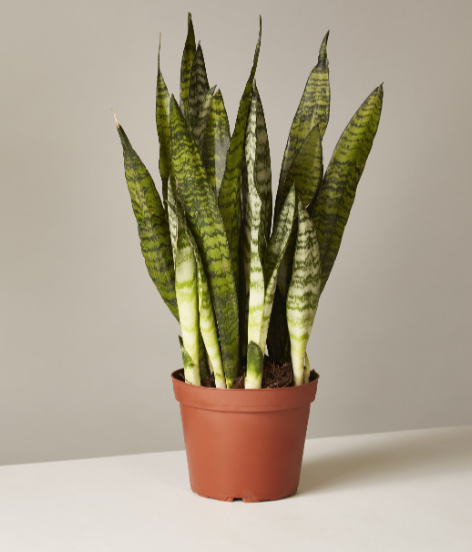

E: Most common houseplants prefer bright to moderate indirect light. That being said, there are a few that prefer low light, and even more that can survive low, indirect light better than others.
In addition to the pothos, there’s the popular snake plant. The Sansevieria trifasciata’s adaptations for surviving drought make it a suitable choice for any plant parent in almost any environment. Snake plants have been shown to filter the same toxins out of the air as the pothos. Another pick would be the ZZ plant, or Zanzibar Gem (Zamioculcas zamiifolia). ZZ plants are also drought tolerant and incredibly low maintenance.
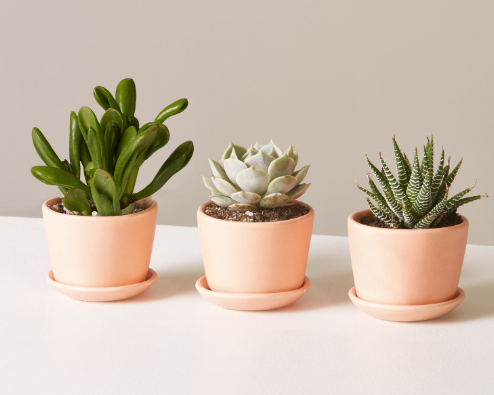
Succulent plants like Haworthia, Echeveria, and Jade thrive in bright, direct light. The easiest way to kill these drought-tolerant, sun-loving succulents is to overwater them. Make sure to use a well-draining potting mix, and pick a planter with proper drainage or add a generous layer of lava rocks before potting.
The pothos and snake plant are pretty hardy, but if they’re in bright, direct light for the majority of the day, you will notice these plants visibly dry out and may even start to show signs of sunburn. If you notice this, move them a few feet away from the window and into the room itself. Then go get a cactus for the window!
Remember that light is food for plants. Understanding how much natural sunlight your plant needs and how much light your space can provide is key. Don’t be afraid to learn this through research and experimentation.
M: When I took your Plants 101 class, I found the tips on watering plants so helpful! I used to just dump a little water on my plants every few days but learned from your horticulturists that plants should be watered thoroughly, and that many only need to be watered every few weeks.

E: Instead of sticking to a formal schedule, check on your plant every few days to look for signs of thirst — bone dry potting mix, wilting stems, and wrinkling leaves. Use your fingers and feel if the soil is wet at least two inches below the surface. When it’s time to water, slowly water directly into the potting mix around the base of your plant. Your soil is like a sponge — water until it is slightly moist. Remove excess water from the saucer a bit after you’ve watered. Plants, especially during the winter, tend to need less than we think.
M: Which plants like to have their leaves misted and which hate it?
E: The majority of houseplants do not need to be misted, but a few can benefit from it. Epiphytes like different verities of ferns, air plants, bromeliads, and orchids appreciate regular misting, in addition to frequent waterings. If your bathroom has windows, these plants would appreciate the space’s higher humidity levels, too.
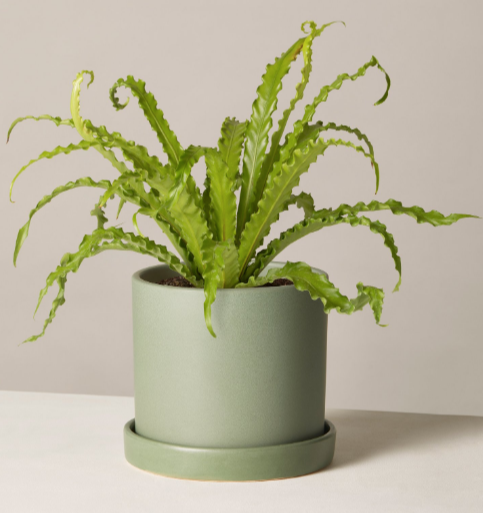
M: New York is dirty! How can dust and grime affect your plants and what’s the best way to clean them?
E: Plants breathe through little pores on their leaves called stomata, and dust clogs them. It’s important to clean your plant’s leaves once a season, if not more often. To clean — wet a soft cloth (or sponge) with lukewarm water and wring out any excess water. Support each leaf with one hand gently from under and wipe down, away from the stem very carefully with the other hand. Make sure you get the undersides too. For delicate or very small leaves, try a soft brush or duster instead.
M: I learned from your workshop that plants should always be removed from their plastic containers and placed in a larger planter. Ideally, how much extra room should the planter provide?
E: Try to keep the size no more than 2–3” larger in diameter for tabletop planters, and no more than 5–6” larger in diameter for floor planters. For example, if your plant is currently outgrowing a 4” plastic nursery pot — look for a planter that’s around 6” in diameter.
Remember that you don’t want your plant “swimming” in a large planter filled with potting soil. That leads to overwatering and air pockets. If you want your plant to grow, size up its planter slowly and properly.
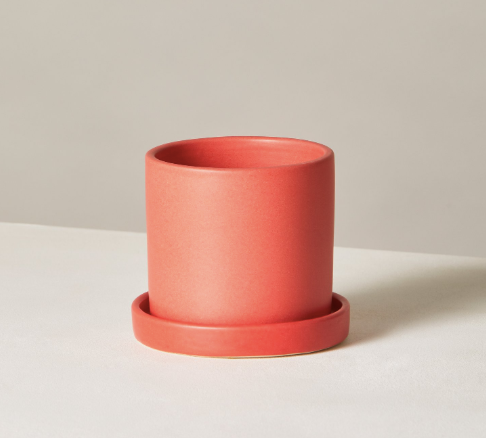
M: What should you do when in doubt of how to care for a plant?
E: A plant’s natural habitat provides the best clues for how to care of it. Take a cactus for instance: it calls hot, dry, sunny deserts home. Inside it wants to be in the sunniest spot possible, watered infrequently, and never misted. Whereas a fern that calls the wet forest floor home: inside it wants to be in moderate to low, indirect light, watered once a week, and near a humidifier.
M: How can you tell if a plant is doing well? How can you tell if it’s dying? What’s the best way to save a dying plant?
E: This is a tough question! Your plant is doing well if its leaf coloring is generally normal (occasional leaf shedding is natural), if you see yearly signs of new healthy growth, and if it’s pest-free.
Characteristics of a dying plant are trickier to pin down. As plant parents, we tend to become overcautious at the first yellow leaf or browning tip. Although it’s important to be vigilant as you get to know your plant, keep in mind these are not symptoms of death, but, more often than not, smaller issues that can be fixed. Think overwatering (remove dead leaves and let mix dry out), dry air (buy a humidifier), and root-bound (repot to larger planter).
When talking to our community, it became clear people were looking for a place to seek and share plant care advice (along with proud pics of their collections). We ended up launching what we call a ‘plant share’ forum online earlier this year.
M: Are there any flowering plants that do well indoors?
E: The Phalaenopsis orchid is a blooming plant that does well indoors. Keep it in bright, direct light, and water frequently during its blooming period. When it’s dormant, let it dry out completely between waterings.
M: What are the benefits of having plants in your home?
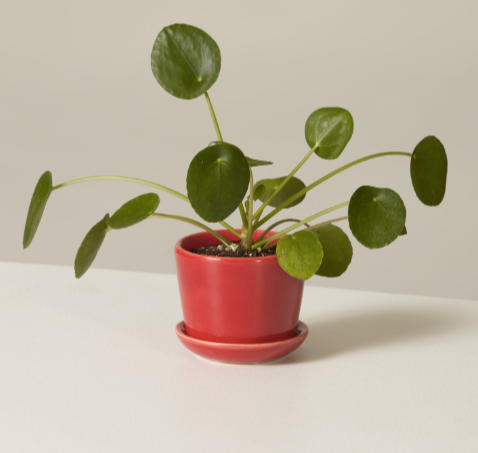
E: It’s true when we say plants make people happy. Not only can indoor plants enhance the overall appearance of a space, but they’ve been shown to boost mood, increase creativity, reduce stress, and eliminate air pollutants, among other benefits.
Indoor air pollution is generally a consequence of toxic emissions from synthetic building materials and airborne mold, paired with energy efficient construction like making spaces as airtight as possible, which reduces air circulation.
Common contributors like wall paint, vinyl, laminates and plastic release toxic emissions. The good news is, plants can absorb these harmful toxins, break them down into gentle byproducts, and store them in their soil to use later for food.
But it’s also worth noting that one of the most under-appreciated benefits of keeping houseplants is the calming, relaxing impact they can have. Studies show that simply touching a plant’s leaves can lower your stress levels.
Tag coconutsmag in your IG photos to share your own plant pics — we might just feature you!
All photos courtesy thesill.com.